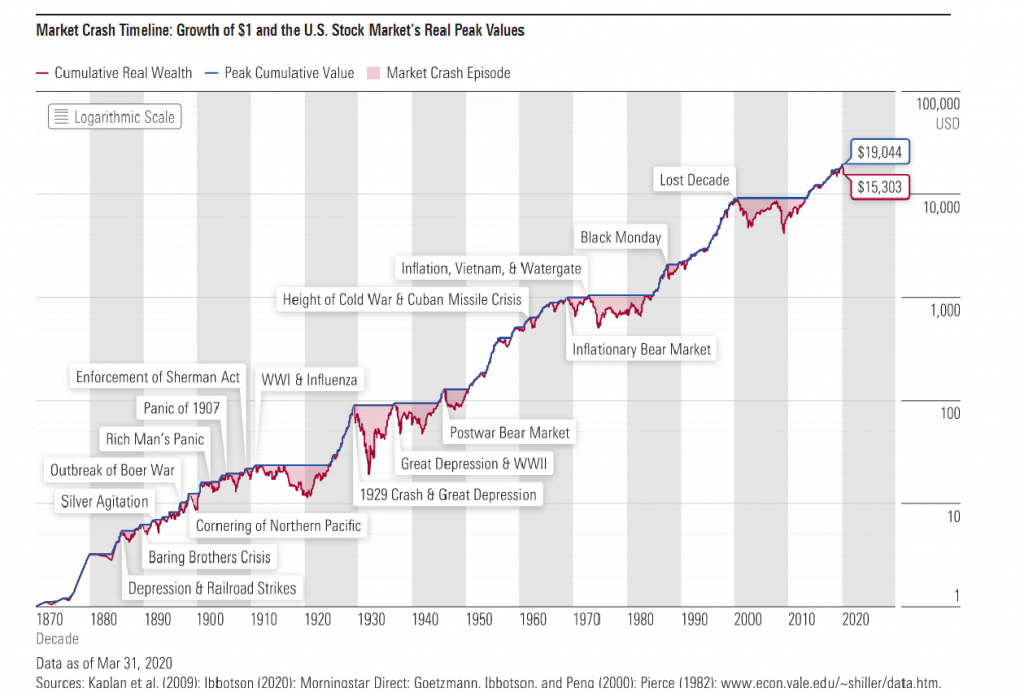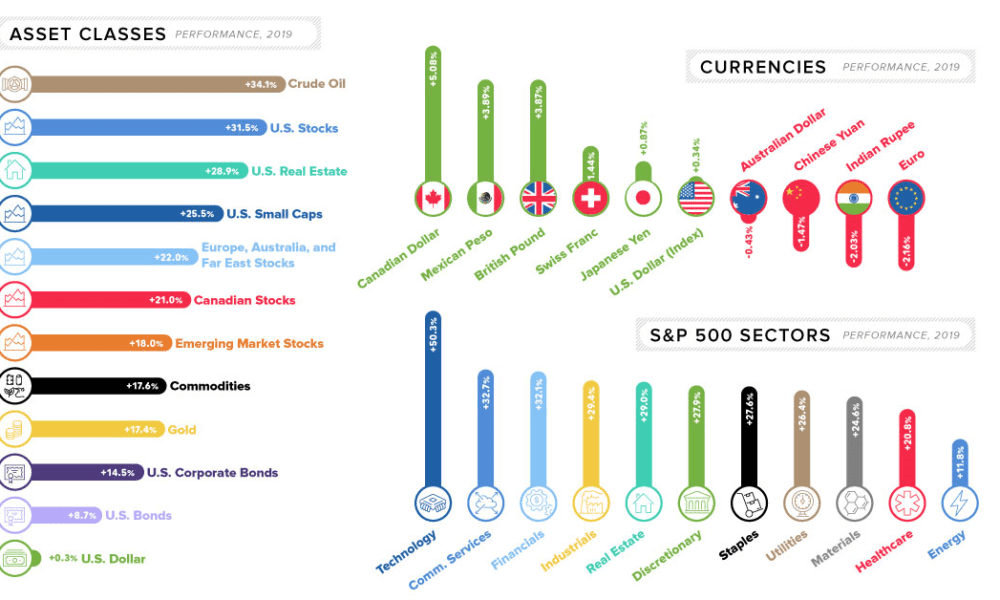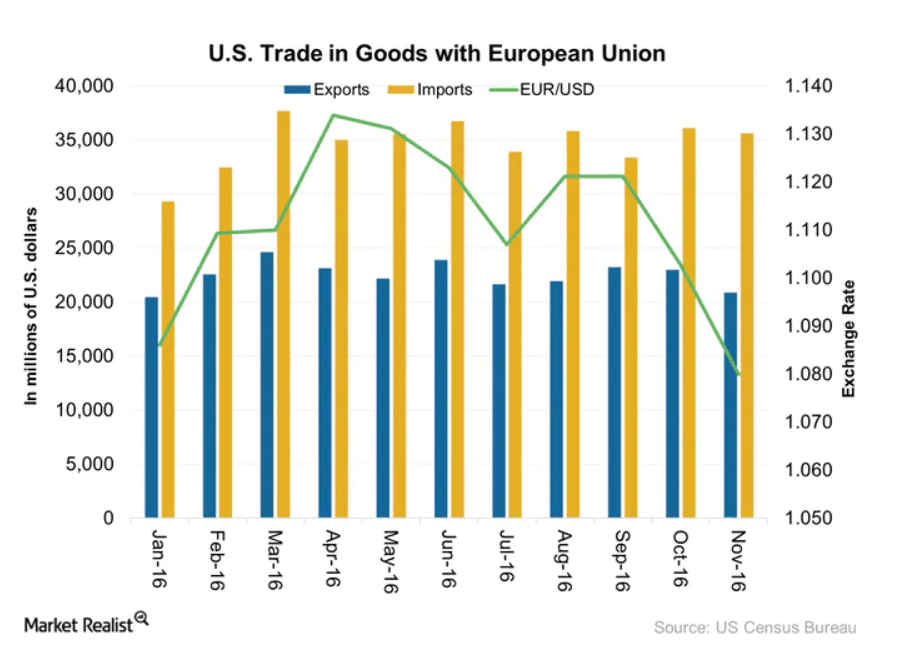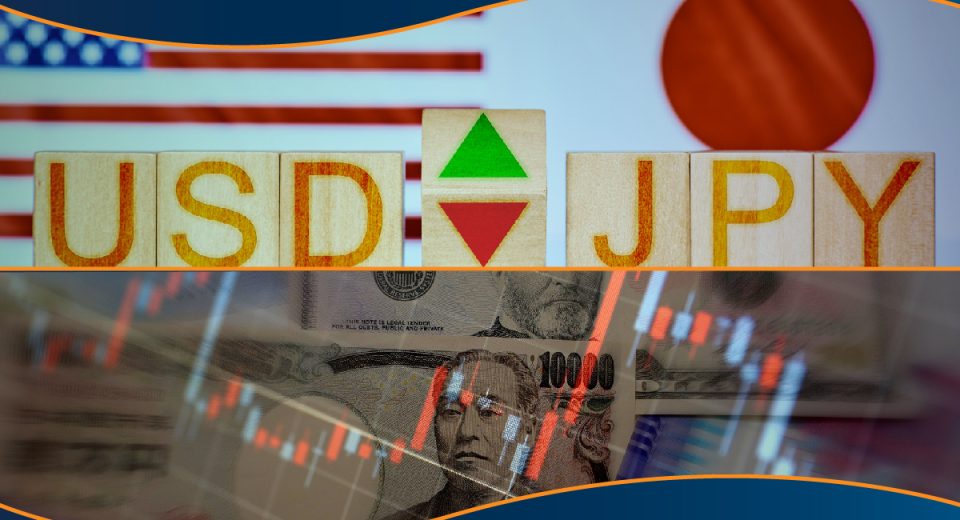Tips to Control Psychological Fear in Volatile Market Conditions

The ups and downs of the financial markets are a normal part of the trading journey. Market calamities can occur suddenly and out of nowhere, just like the COVID-19 pandemic. Fear and anxiety under such conditions is normal, leading to massive selloffs.
Market downturns can induce hasty reactions, as portfolio values fall and volatility surges. But every market decline in history, irrespective of how severe it was, has been followed by stability and positive growth in the long term. Research has proven that the average duration of a bear market is below one-fifth of the average bull market. Making rash decisions can cause investors to sell low and miss out on future opportunities of price increases.

Image Source: https://www.morningstar.com/features/what-prior-market-crashes-can-teach-us-in-2020
Volatility can provide plenty of trading opportunities. Yet, the constant oscillation between excitement and panic is what hurts financial decisions, according to prominent financial psychologists. The human brain is programmed in a way that emotions tend to dominate rational decision making. However, there are ways to tackle impulsive decisions.
Do Not Act on Impulses
Acknowledging fear and panic is important, but traders need to consider not acting upon these emotions. Volatility should be a time to evaluate the portfolio. If the fundamental reasons for investing in an asset remain clear, then short-term volatility should not be a concern. Large-cap companies with solid market fundamentals can remain unaffected by short-term market declines. Focus needs to be on what the trader already knows and their long-term objectives. It is vital to remember that the financial markets have overcome many obstacles, recovering each time to claim new highs. Trading in volatile conditions needs perspective, based on future goals.
Consider Rebalancing Portfolio without Making Extreme Changes
Traders could consider selling off a small portion of their portfolio, while letting the other assets run, to leverage on a later market surge. This way they won’t miss out on gains if the markets recover. On the other hand, if the markets continue to decline, they will have saved some returns from eroding. Market corrections can be a good time to rebalance the portfolio, but not make drastic changes.
An important rule here is to study market trends, before investing. For instance, some stocks can drive bear markets and it could be wise to avoid them. Similarly, stocks that have financial risk and follow low standards of corporate regulations can have high surges in market recoveries, but then they could exhibit long-term downward trend.
Diversify Portfolio with Various Assets
Not all assets react to market volatility in the same manner. A healthy mixture of stocks, currencies, bonds, commodities and cryptocurrencies need to be considered to keep apprehension at bay. 2019 saw an early backdrop of high volatility, marked by escalating US-China trade tensions, Brexit uncertainty and fear of recession. However, every major asset class had a positive return at the end of the year, at different magnitudes.

Image Source: https://www.visualcapitalist.com/how-every-asset-class-currency-and-sector-performed-in-2019/
In a well-diversified portfolio, losses in one asset class can be offset by gains in other.
Have an Exit Plan before Entering a Trade
Peace of mind can be easier to attain, if there is a planned exit strategy. Before entering into a position, traders need to have a plan on where they will place their stop-loss and take-profit levels. This makes the profit/loss ratio predictable and that helps keep panic levels down. It also prohibits emotions, like greed and anger, from clouding trading decisions. The trading plan needs to be followed diligently.
Learn to Evaluate Financial News
The financial markets are impacted by geo-political developments. Yet, not every sector sees significant volatility on account of an economic release. There are certain times when news can impact both local and international economies. For instance, the US Presidential elections can trigger volatility in the global financial markets, as can an interest rate announcement made by the US Federal Reserve.
A stronger EUR rate, relative to other currencies could be positive for US stocks, as consumer buying power in Europe increases. This leads to a rise in American exports to European nations and higher revenues for US based companies. A globalised economy means that all markets are interrelated. However, this degree of correlation differs. Investors need to understand that and stop reacting to every new development.

Image Source: https://marketrealist.com/2017/01/euro-depreciation-and-its-impact-on-trade-with-the-us/
As an investor, it is important to be aware of breaking news, but only information from credible sources should be considered.
Reduce Risk by Evaluating Position Size and Leverage
At times of high market volatility, traders need to consider reducing their risk profile by reducing trade sizes and margin ratios. Trades might be smaller, but the market is moving faster, so traders can consider more opportunities to trade.
Yet the unpredictability of market prices means that losses can occur and if leverage is higher, these losses will become magnified. A conservative risk profile can prevent downside risks.
Consider Trading Derivatives
Derivatives like Contracts for Difference (CFDs) allow traders to speculate on the price of an asset, without physical ownership of the asset. Through CFDs, traders can take positions in both rising and falling markets. Investors can short sell a stock market index to hedge a stock portfolio, and potentially gain from market declines, which offset some losses in their portfolio. CFDs can track any market including currencies, commodities, metals and cryptocurrencies.
However, these are complex instruments. Traders need to be aware of how they work, and the risks involved, before considering investing.
Taking a Break When Required
Lastly, an exhausted mind tends to lead to more bad decisions. This is why it is important to take regular breaks from trading and focus on mental and physical health. It is also vital to understand when to stop trading. If losses are allowed to run for long, out of the Fear of Missing Out (FOMO), the risk of complete erosion of the trading capital is higher.
Trading in a volatile markets requires patience, knowledge and the ability to stick to plans while ignoring the larger crowd.
Reference Links
- https://www.forbes.com/sites/investor/2018/02/23/six-ways-to-control-your-emotions-during-volatile-markets/#44a9b8461e2a
- https://www.cnbc.com/2020/03/03/how-to-control-your-emotions-during-market-volatility.html
- https://www.investopedia.com/articles/investing/021116/3-reasons-not-sell-after-market-downturn.asp
- https://tradebrains.in/things-not-do-when-the-stock-market-is-volatile/







